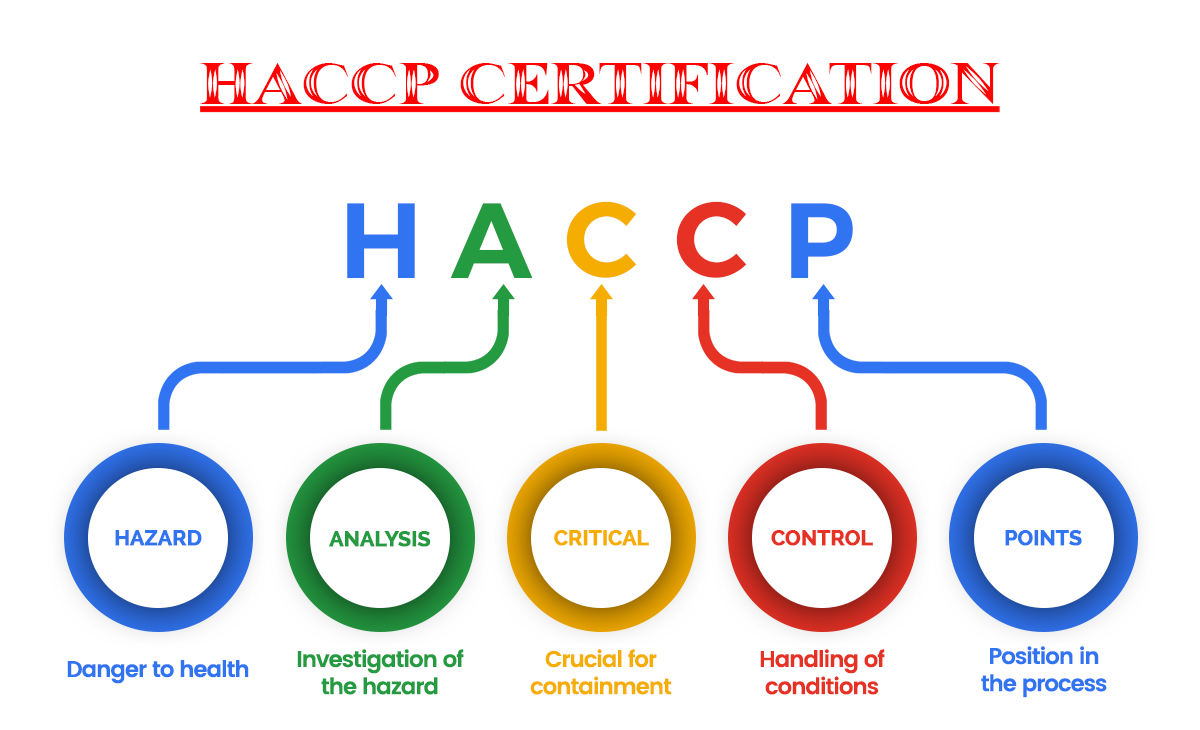HACCP certifications

HACCP CERTIFICATION IN INDIA
A preventive system haccp certification in india recognised and respected by haccp certification in india the scientific community as well as international food quality organisations as the most effective approach to the manufacture of safe food.
HACCP SYSTEM IMPLEMENTATION BASED FOOD SAFETY SYSTEMS
The certification is designed to haccp certification in india prevent problems before they haccp certification in india occur and to correct them as soon as they are detected.
A process control system that identifies and prevents microbial, chemical and other hazards in food. Potential food hazards could be biological (microbes); chemical (toxin); or physical (adulterants).
All the available Food Safety Systems are based on Codex Principles & HACCP SYSTEM IMPLEMENTATION Hazard Analysis Critical Control haccp certification in india Point is a seven-step logical tool develop a food safety plan.
Requirements to enable a HACCP SYSTEM IMPLEMENTATION plan
“This membership allows us to haccp certification in india respond to our customers’ diversified supply chain needs. We can now help them monitor sustainable performance in the supply chain more effectively, providing more visibility on the results of our audits. By submitting supply chain audit results to the database, we help ensuring transparency and re-use of existing audit data. A manufacturer does not need to re-audit a company to qualify them as suppliers, but rather checks their status in the Sedex database.”
“Our collaboration with Sedex is an important step for the direction we are taking with supply chain activities. We intend to pursue relations with key players in the supply chain arena, underlining the growing importance of supply chain auditing for our business.”
The benefits
1. Describe the product
2. Identify intended use
3. Construct process flow diagrams
4. Conform the flow diagram with actual situation
Principals of HACCP SYSTEM IMPLEMENTATION
1. Identify potential food safety hazards.
2. Identify critical control points.
3. Establish control limits
4. Establish monitoring points.
5. Establish corrective action.
6. Establish effective record keeping procedures.
7. Establish procedures for verification.